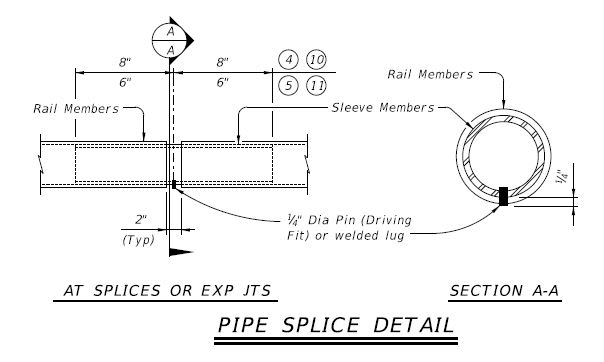First time starting a thread, so forgive me if I'm in the wrong section of the forum.
A structural engineer at my company designed a 67' long, 4' wide catwalk consisting of W21 beams and lateral bracing on the top and bottom flanges. He has since retired, and the catwalk is currently in fabrication. He called me up out of the blue today concerned about the handrail. He showed continuous handrail on the drawings, as is required by code. He's concerned that the handrail will buckle when the W21s deflect under dead and live load. He designed the catwalk for L/360 live load deflection. Handrail is your typical 1 1/2" sch 80 posts with 1 1/2" sch 40 railing connected to the outside of the beam webs.
Are there exceptions in the code to allow for slip connections in the handrail or can we break the handrail into sections? Is this something we even need to worry about? Need to use outriggers to brace the handrail? Any input is appreciated. I can't find anything online about this.
A structural engineer at my company designed a 67' long, 4' wide catwalk consisting of W21 beams and lateral bracing on the top and bottom flanges. He has since retired, and the catwalk is currently in fabrication. He called me up out of the blue today concerned about the handrail. He showed continuous handrail on the drawings, as is required by code. He's concerned that the handrail will buckle when the W21s deflect under dead and live load. He designed the catwalk for L/360 live load deflection. Handrail is your typical 1 1/2" sch 80 posts with 1 1/2" sch 40 railing connected to the outside of the beam webs.
Are there exceptions in the code to allow for slip connections in the handrail or can we break the handrail into sections? Is this something we even need to worry about? Need to use outriggers to brace the handrail? Any input is appreciated. I can't find anything online about this.

